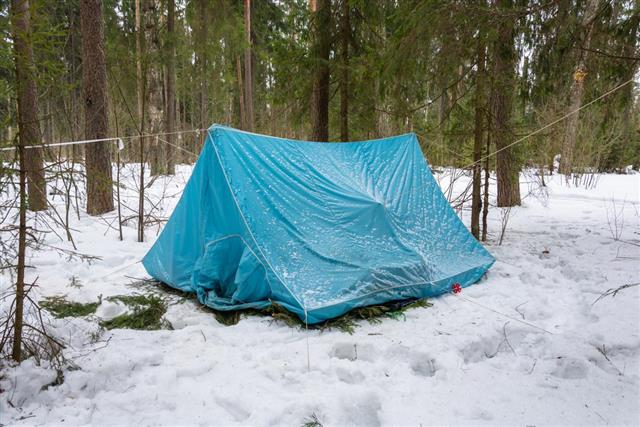
From the good ol’ tepees to the very spacious trailer tents, camping gear has come a long way. ThrillSpire sheds light on the different types of tents used for camping.
While picking the right tent, do pay close attention to its size and bulk, material used, and ease of pitching before you factor in the cost. This will ensure that you have a sturdy and manageable tent, instead of a cheap, but complicated contraption.
Camping, as a recreational activity has quite the historic beginnings. It was once seen as the best way ‘to get away from it all’, when one actually wanted to take a break in order to enjoy the wilderness. But with the passage of time, camping went from being a hard worker’s only means of solitude to something that’s enjoyed with family and friends. Undoubtedly, the ease of transport, availability of camping gear, and the spate of camping grounds around towns and cities has sky-rocketed the popularity of camping.
In this ThrillSpire article, we’re focusing on the various types of tents available in the market today, beginning with the traditional kind.
A-shaped/Ridge Tents
We begin with the original tent, which is far from the domes and tunnels of today. Well, it has undergone a sort of metamorphosis to suit today’s times. Ridge tents have two poles at either ends, with a cross pole holding it up. The size of the tent can be altered, and the fabric of choice is up to you.
These tents are non-fussy and easy to pitch, and perfect for a short trip in not-too-windy conditions. Depending upon the material, they could go on the heavier side. The fact that their sloping sides don’t leave much space within is a definite downer. It can work well for those who only wish to use it as a sleeping spot.
Tunnel Tents
Tunnel tents have various tube supports across their length, which mimics the appearance of a tunnel. These tents are quite spacious, depending upon its size, of course, and are a favored type among families.
On the flip side, these tents may not provide enough stability in extreme windy conditions. However, they make up for it in terms of space, especially when pitched end-on to oncoming winds.
Dome Tents
Dome tents are quite popular among campers today, owing to its ease of use. Their frame comprises two or three tube supports running through the center, underneath the fabric. These tents are mostly free-standing, which makes it easy to move them around. The dome shape allows better head space, and ground space as well. These may also be inflatable, wherein one just has to peg the corners, and the compressor does to job of setting up the rest. Honestly, it is quite hard to find negative features in this type.
Semi-geodesic and Geodesic Tents

Geodesic tents are those in which the frame comprises tubes or poles that crisscross each other to form triangles. These tents offer excellent stability under extreme conditions, as their framework lends great support to the structure. These are perfect companions for a Himalayan or an alpine expedition.
Pictured above is a semi-geodesic tent, named so owing to fewer poles that make up the frame. These tents, too, offer great stability in lesser-than-extreme conditions, and even when pitched on slopes.
Family Tents
As the name goes, family tents are made for larger groups who do not mind camping under the same roof. These tents are available in a wide variety of designs―they may be dome or tunnel shaped, or at times, even a combination of the two.
Tepee
These traditional versions of tents are known as tepees or bell-shaped tents. Not seen as often these days, they used to be a constant on Scout campgrounds. These tents offer the very basic amenities―limited space and portability. However, the tepees of the past which were made up of very heavy fabric, were able to withstand quite a lot of weather-related hostilities.
Backpacking Tents
A backpacking tent is a lightweight and portable contraption, aimed at solo campers or those who travel in pairs. These tents weigh under seven pounds, and can fold up into a smaller pouch, which can possibly fit into a large backpack. Most of these tents tend to be freestanding, which is why they are easier to pitch.
Folding Campers and Trailer Tents
Folding campers are an extension to a trailer, and do not require any pegging. They are spacious, and can be custom-made to accommodate all your requirements. Trailer tents are those which are pegged out, as the canvas fabric is folded out of the trailer. They have an awning that offers good respite from the harsh sunlight.
These were some of the camping tents that are commonly found in the market, and tend to be favored by most. Of course, constant innovation means that there are frequent alterations to the design and features of these products. Therefore, do conduct some amount of research before you invest in one.


































